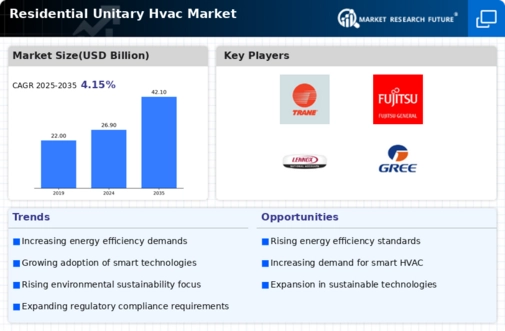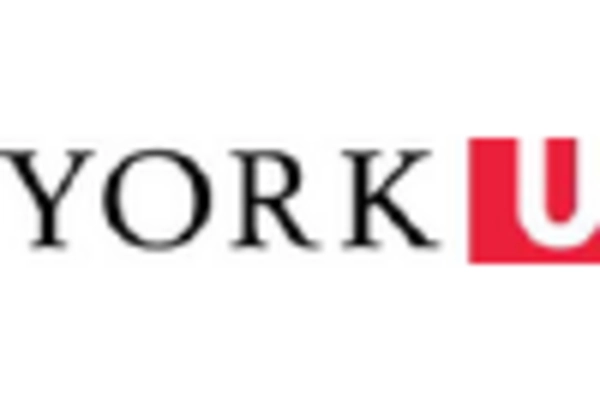Regulatory Compliance and Standards
Regulatory compliance is a critical driver in the Residential Unitary Hvac Market. Governments worldwide are implementing stricter regulations aimed at reducing greenhouse gas emissions and promoting energy efficiency. These regulations often mandate minimum efficiency standards for HVAC systems, compelling manufacturers to innovate and improve their product offerings. For instance, the implementation of the Energy Star program has encouraged the production of high-efficiency units that meet specific performance criteria. Compliance with these standards not only enhances marketability but also aligns with consumer preferences for sustainable products. As regulations continue to evolve, the Residential Unitary Hvac Market will likely see increased investment in research and development to meet these demands.
Rising Demand for Energy Efficiency
The Residential Unitary Hvac Market is experiencing a notable increase in demand for energy-efficient systems. As consumers become more environmentally conscious, they seek HVAC solutions that minimize energy consumption while maintaining comfort. According to recent data, energy-efficient HVAC systems can reduce energy usage by up to 30% compared to traditional units. This shift is driven by both economic incentives, such as rebates and tax credits, and regulatory pressures aimed at reducing carbon footprints. Consequently, manufacturers are innovating to produce units that not only comply with stringent energy standards but also appeal to the eco-conscious consumer. This trend is likely to continue, as energy efficiency becomes a key purchasing criterion in the Residential Unitary Hvac Market.
Increased Focus on Indoor Air Quality
The emphasis on indoor air quality (IAQ) is becoming increasingly prominent within the Residential Unitary Hvac Market. With growing awareness of health issues related to poor air quality, consumers are prioritizing HVAC systems that offer superior filtration and ventilation capabilities. Research indicates that effective air filtration can reduce airborne pollutants by up to 99%, making homes healthier environments. This trend is further supported by regulatory guidelines advocating for improved IAQ standards. As a result, manufacturers are developing advanced filtration systems and air purifiers that can be integrated into existing HVAC units. The heightened focus on IAQ is likely to drive innovation and growth within the Residential Unitary Hvac Market.
Technological Advancements in HVAC Systems
Technological advancements are significantly shaping the Residential Unitary Hvac Market. Innovations such as smart thermostats, variable speed motors, and advanced refrigerants are enhancing system performance and user experience. The integration of IoT technology allows for remote monitoring and control, enabling homeowners to optimize energy usage and comfort levels. Data indicates that smart HVAC systems can lead to energy savings of approximately 10 to 20%. As these technologies become more accessible and affordable, they are likely to drive consumer adoption, further transforming the Residential Unitary Hvac Market. The ongoing evolution of HVAC technology suggests a future where systems are not only more efficient but also more user-friendly.
Growing Construction and Renovation Activities
The surge in construction and renovation activities is a significant driver for the Residential Unitary Hvac Market. As new residential buildings are constructed and existing homes undergo renovations, the demand for modern HVAC systems is on the rise. Data suggests that the residential construction sector is projected to grow steadily, with an estimated increase in housing starts. This growth is fueled by factors such as urbanization, population growth, and rising disposable incomes. Consequently, homeowners are more inclined to invest in advanced HVAC solutions that offer improved efficiency and comfort. This trend indicates a robust market opportunity for manufacturers within the Residential Unitary Hvac Market, as they cater to the evolving needs of consumers.


















Leave a Comment